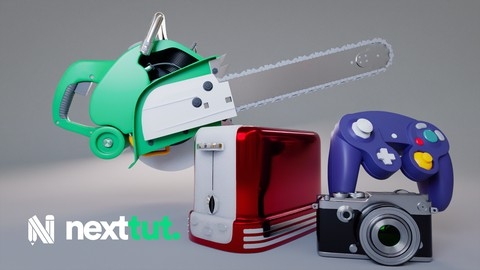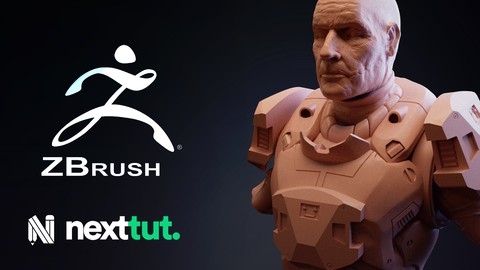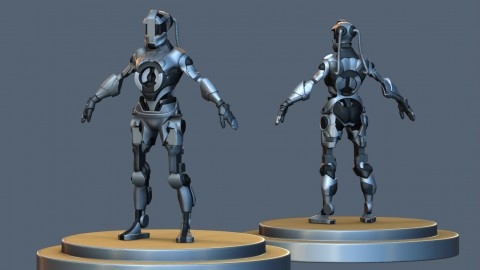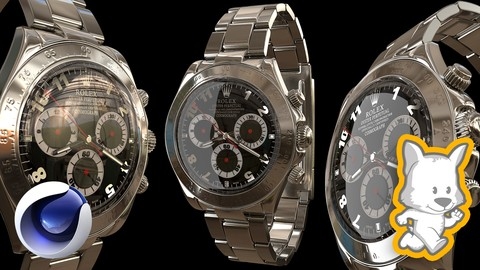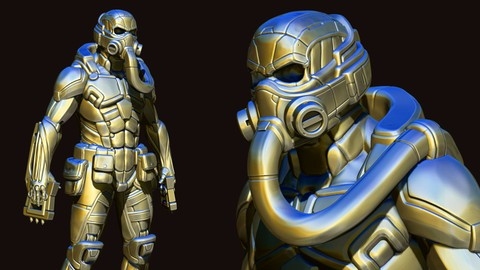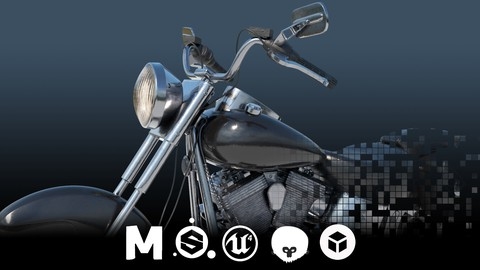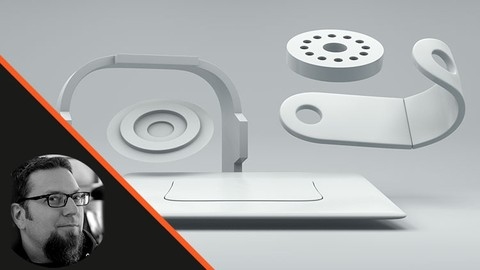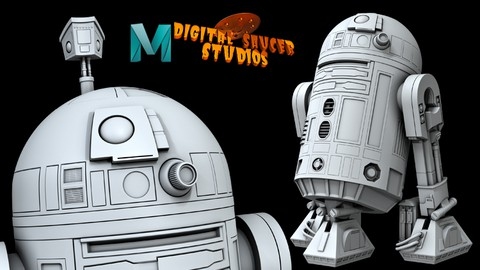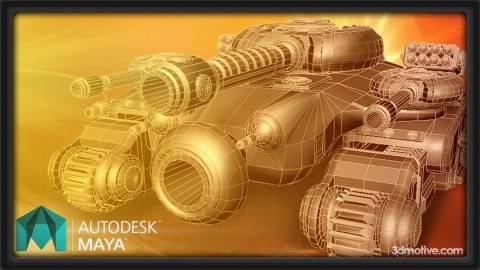Hard surface modeling is a vital skill for anyone looking to create stunningly detailed and realistic 3D models.
Whether you’re aiming for video games, movies, or product visualization, mastering this technique allows you to bring your creations to life with remarkable precision.
As the demand for skilled hard surface modelers continues to soar, this skill set opens doors to a rewarding career path.
Navigating the plethora of hard surface modeling courses on Udemy can be a challenging experience, leaving you questioning which one is truly the best fit for your learning goals.
You’re searching for a course that offers comprehensive instruction, engaging tutorials, and real-world projects to help you build a strong portfolio.
For the ultimate hard surface modeling course on Udemy, we highly recommend Hard Surface Modelling in Maya.
This course stands out for its focus on real-world objects, guiding you through the process of modeling everyday items like toasters and cameras, ensuring your skills are directly transferable to professional work.
You’ll gain hands-on experience with essential techniques like edgeloops, edgeflow, and interlocking edgeflow, culminating in the creation of intricate models like a chainsaw.
While Hard Surface Modelling in Maya emerges as our top pick, we understand that everyone has different preferences and learning styles.
Don’t worry!
We have a wide range of other fantastic courses to explore, each tailored to specific software, project types, and learning levels.
Keep reading to discover the perfect hard surface modeling course to unlock your creative potential.
Hard Surface Modelling in Maya
The course covers all the fundamentals you need to get started with hard surface modeling in Maya.
You’ll begin with an introduction to Maya and learn how to set up your project properly.
The course then dives into the basics of hard surface modeling, teaching you essential concepts like edgeloops and edgeflow.
You’ll even learn about interlocking edgeflow, which is crucial for creating complex hard surface models.
From there, you’ll work on modeling various objects like a toaster, a Gamecube controller, a camera, and even a chainsaw.
The course walks you through each step, from blocking in the main shapes to adding intricate details.
You’ll learn how to set up image planes, model different components, and create unique features like buttons, switches, and knobs.
One of the standout aspects of this course is the focus on real-world objects.
By modeling items like a toaster and a camera, you’ll gain practical experience that translates directly to professional work.
The chainsaw project, in particular, is an excellent opportunity to showcase your hard surface modeling skills.
Towards the end, the course covers rendering techniques, including clay rendering and working with Arnold materials.
You’ll also learn how to create turntable animations, which are essential for showcasing your hard surface models.
With its step-by-step approach and practical projects, you’ll develop the skills necessary to create highly detailed and realistic hard surface models.
Zbrush Hard Surface Sculpting for Beginners
You’ll start by learning the essential hard surface tools in ZBrush, including ZModeler, Polygroups, ZRemesher, and Retopology.
From there, the course dives into modeling various objects like a Pokeball, revolver, knife, and armor pieces for an orc and sci-fi character.
You’ll learn techniques such as live booleans, detailing, damage sculpting, and UV mapping.
The Pokeball project will teach you how to create the main shapes, internal components, and intricate detailing.
For the revolver, you’ll sculpt the barrel, handle, magazine, trigger, hammer, and body parts, as well as add realistic damage.
The knife project covers modeling the blade, handle, and details, followed by retopology and UV baking.
The armor sculpting sections are particularly impressive, where you’ll create an orc armor set complete with a jaw piece, chain mail, and horns.
The sci-fi armor project is extensive, covering the suit, torso, back, arms, and boolean operations.
Throughout the course, you’ll learn essential hard surface modeling techniques using ZBrush’s powerful tools.
With the project files provided, you can follow along and build an impressive portfolio by the end.
Hard Surface Modeling and Sculpting Course in 3D Coat
This course goes from the basics of the interface and part building to advanced techniques like surface form development, boolean operations, and subtractive design.
You will start by learning how to change proportions, split surfaces, and work with extrusions in global space.
The course then dives into more complex topics like working with voxel layers, managing memory errors with booleans, and refining sculpted forms.
As you progress, you’ll learn how to create and refine various body parts like the head, arms, chest, and knees.
The course even covers techniques like using curves to form and clone fingers, as well as posing them.
One of the standout features of this course is its focus on design exploration and conceptualization.
You’ll learn how to redesign and rebuild parts like the head, chest, and torso, as well as explore different design concepts on the fly.
The course also covers important techniques like subtractive design, using brushes for detailing, and working with primitives and extruding effects.
You’ll even learn how to add surface details, curves, and pipes to your models.
Towards the end, you’ll learn about simple lighting and shaders, as well as how to fix tricky boolean issues and refine silhouettes.
The course concludes with a final render, ensuring you have a complete understanding of the entire modeling process.
Complete Hardsurface Modelling & Sculpting inside ZBrush4 R8
You will learn how to model a motorbike from start to finish using ZBrush’s powerful tools and techniques.
The course begins by gathering reference materials and blocking in the basic shapes of the motorbike, like the tires, tank, and seat.
You’ll learn how to use ZSpheres to create an adjustable frame, and how to incorporate existing geometry to model components like the seat and wheel arches efficiently.
As you progress, you’ll dive into creating custom brushes and tools for specific tasks, such as modeling chains, nuts, bolts, and suspension springs.
These reusable assets will save you time on future projects.
You’ll also learn techniques like using arrays to create tiled tread patterns and applying radial symmetry for precise modeling.
The instructor covers advanced topics like booleans, creasing control, and dynamesh for hard surface modeling.
You’ll model intricate parts like the exhaust pipes, muffler, radiator, and engine coolers, as well as smaller details like pedals, brakes, and light lenses.
Texturing and rendering are also covered in-depth.
You’ll learn poly painting, UV mapping, creating materials like the energy material, and setting up render passes in ZBrush.
Finally, you’ll composite the renders in Photoshop for a stunning final image.
Throughout the course, the instructor emphasizes scene organization, naming conventions, and keeping your workflow tidy, which are crucial skills for complex projects.
Hard Surface 3D Modeling in Cinema 4D: Hyper Realistic Watch
The course takes you through the entire process of creating a highly detailed 3D watch model from start to finish.
You’ll begin by setting up your project and getting familiar with Cinema 4D’s interface and essential modeling shortcuts.
The course wastes no time diving into the hands-on work, guiding you step-by-step through modeling the watch body, bezel, case, crowns, and back cap.
Quizzes are included to reinforce your shortcut knowledge.
As you progress, you’ll tackle more advanced components like the interior panel, circles, text details, Rolex logo, numbers, and hands.
The course ensures you have ample practice activities along the way to apply what you’re learning.
A significant portion is dedicated to modeling the intricate bracelet piece-by-piece, with another quiz to test your mastery of shortcuts.
You’ll then dive into lighting, texturing, UV mapping, and finally rendering your photorealistic 3D watch scene.
Throughout the course, you’re encouraged to take notes and practice as you go.
The hands-on approach and structured progression make this an excellent choice if you want to build hard surface modeling skills in Cinema 4D while creating an impressive portfolio piece.
Hard Surface Character Creation in Zbrush
The course starts by covering the interface, tools, and techniques in ZBrush that you’ll use throughout.
You’ll learn about brushes, deformers, and various modeling methods.
Once you have the basics down, you’ll jump into sculpting and modeling the character.
You’ll blockout the overall shape, then focus on specific areas like the torso, accessories, arms, and legs.
The course goes into incredible detail, with multiple lessons dedicated to areas like the feet, head, and knuckles.
A huge portion of the course is devoted to revisions, with over a dozen lessons helping you refine and polish your model.
You’ll learn techniques for adding intricate details, cleaning up your meshes, and preparing for texturing.
When it comes to texturing, you’ll explore materials and surface details to give your model a polished, production-ready look.
Finally, you’ll learn how to pose your character, set up lighting, render, and composite the final image in Photoshop.
With such an in-depth, systematic approach, you’ll gain comprehensive skills in hard surface character creation from start to finish.
The course covers every aspect you need, from modeling techniques to final presentation.
Hard Surface Vehicles - The Complete 3D Production Pipeline
With Maya, you’ll start by modeling a motorcycle from reference images, blocking out the main shapes and adding details.
You’ll learn techniques like using image planes, lattice deformers, quad draw, and bridging.
The course guides you through UV mapping the model in Maya, preparing it for texturing.
You’ll plan the UV layout and learn automatic mapping techniques.
Then, in Substance Painter, you’ll bake normal maps and create the materials, using generators, masks, and manual painting.
With the model and textures ready, you’ll move into rendering.
The course covers setting up lighting and materials in Arnold for Maya, rendering AOVs, and compositing in Photoshop.
You’ll also learn how to render in real-time engines like Unreal and Marmoset, dealing with issues like emissive maps.
Finally, you’ll export your model to Sketchfab for an online viewer with post-processing effects and VR/AR support.
The course covers the entire hard surface workflow, from modeling to final renders and presentations.
If you want to learn vehicle modeling and follow production pipelines used in the industry, this comprehensive course could be ideal for you.
Advanced Hard-Surface Modeling Techniques in Cinema 4D
You’ll start by learning the flat plane modeling technique, which serves as a foundation for creating precise, geometric shapes.
As you progress, you’ll dive into cylindrical modeling, exploring two distinct methods to construct cylindrical forms with precision.
The course even guides you through making holes in these cylinders, a crucial skill for adding intricate details to your models.
You’ll also discover how to use existing objects as references, allowing you to model complex shapes with greater accuracy.
Additionally, the course teaches you to utilize discs for modeling curved surfaces, a valuable technique for achieving smooth, organic forms.
One of the standout features of this course is its focus on deformers.
You’ll learn how to harness the power of deformers, like the bend deformer, to shape your geometry in unique and creative ways, opening up a world of possibilities for your hard surface models.
Throughout the course, you’ll gain hands-on experience with these techniques, ensuring you develop a deep understanding of each concept.
Master Hard Surface Modeling in Maya 2020
The course takes you step-by-step through modeling every intricate detail of R2-D2 in Maya 2020.
You’ll start by setting up the project, getting familiar with Maya’s interface, and blocking out the basic shapes of R2’s head, body, and legs.
From there, you’ll dive into adding incredible details like the front eye, radar eye, periscope, lightsaber, holoprojectors, and so much more.
The course meticulously guides you through crafting R2’s complex body panels, utility arms, coin slots, front vents, power coupler, polarity sink, octagon port, and other mechanical components.
You’ll shape the legs down to the finest details of the feet treads.
As you progress, you’ll refine the head’s iconic dome panels, processor state indicator, and chest pieces.
With over 100 videos covering every aspect of this challenging hard surface model, you’ll gain invaluable skills applicable to any mechanical design project.
Hard Surface 3d Vehicle Modeling in Maya for Games
You’ll start by learning the fundamentals of modeling the various components of the tank, such as the barrel, side cannons, hatch, track arm, and the body itself.
As you progress, you’ll dive deeper into more advanced techniques like modeling the track armor, missile launcher, and the intricate chassis.
The course dedicates several sections to refining and adding details to critical elements like the main barrel, plasma cannon, turret, side guns, and track supports.
One of the highlights is the in-depth coverage of creating realistic tank tracks, including techniques like instancing and merging vertices.
You’ll also learn how to add finishing touches by creating pipes, adjusting their placement, and building additional pieces for the chassis.
The course doesn’t just stop at modeling; it also covers the crucial step of wrapping up the model with final polish and refinements.
Additionally, there’s a bonus lecture that explores further learning opportunities with 3dmotive, allowing you to expand your skills even further.
Throughout the course, you’ll gain hands-on experience with various modeling techniques, detailing processes, and workflows specific to creating highly detailed hard surface models like tanks.
With its comprehensive approach and focus on both fundamental and advanced concepts, this course equips you with the skills necessary to tackle complex hard surface modeling projects in the game industry.
